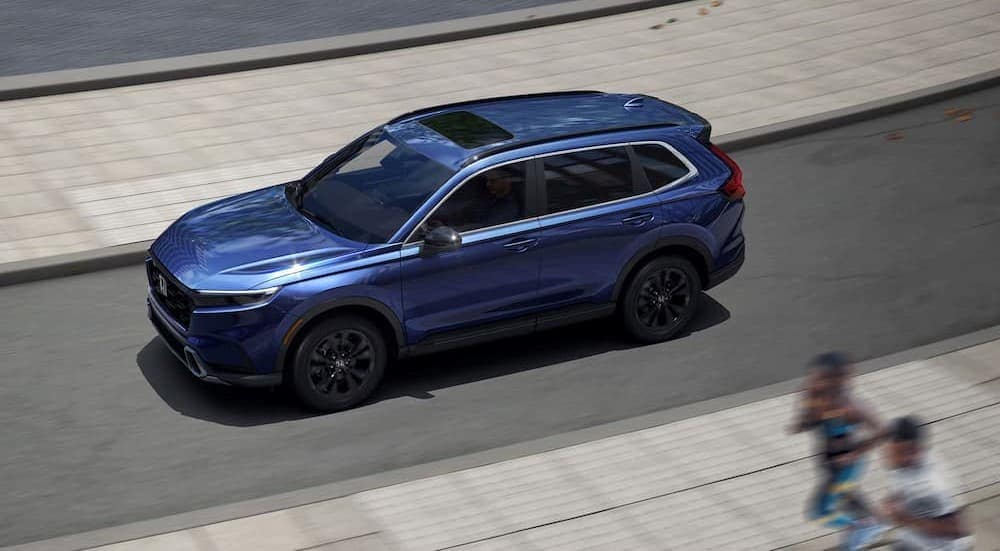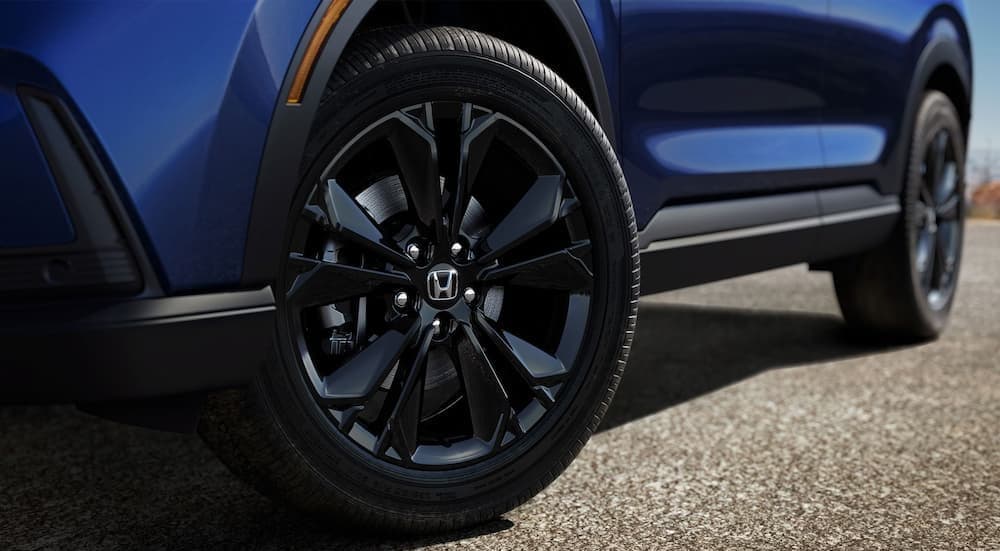
Compact SUVs have become a hot vehicle segment, with an increasing number of drivers discovering the benefits of these versatile vehicles. At the same time, a growing number of drivers are choosing models with hybrid powertrains. These combine a conventional gas engine with one or more electric motors to reduce fuel consumption and harmful emissions. This is why so many commuters and drivers who want to save money on gasoline are choosing hybrids, with two competing models being the Honda CR-V Hybrid and the Toyota RAV4 Hybrid. Unlike their first dedicated hybrids, such as the Honda Insight and Toyota Prius, these brands have now taken mainstream models and extended them by offering a hybrid engine option. The results for both have been impressive. The place to go to find a Honda CR-V Hybrid for sale is here at Southgate Honda. We are an authorized Honda dealership with a great selection of 2025 CR-V Hybrid models to choose from, giving you the inventory you need to find the right car for you.
Hybrid History in the Making
Both Honda and Toyota took an interesting approach to hybrids with their respective compact SUV models. The goal was to take an existing model and give drivers the option to get even better fuel economy and performance by offering a hybrid powertrain option alongside the established gasoline-powered version. Toyota was the first to offer a hybrid option on the RAV4, introducing it in 2016. Four years later, Honda began offering the CR-V as a hybrid. Since then, the hybrid options have become a larger part of both model's lineups. The 2025 RAV4 Hybrid is part of the fifth generation of this model, while the 2025 Honda CR-V Hybrid represents the sixth generation of the model, which began in 2023.

Powertrain Performance and Fuel Economy
There are two main reasons why drivers choose a model with a hybrid powertrain. First, they want the improved performance that comes from adding one or more electric motors to the vehicle to help out the gas engine. Second, they want to reduce fuel consumption. Both the CR-V Hybrid and RAV4 Hybrid are conventional hybrids that do not need to be plugged in. In order to charge the battery pack for the electric motor, the gas engine doubles as a generator that keeps the battery charged. This is especially true at lower speeds, where the electric motor is doing most of the work. In addition, both models have regenerative braking, which recaptures a portion of the kinetic energy normally released when you step on the brakes, rechanneling it to give the battery pack a little boost.
The 2025 Honda CR-V Hybrid features a 2.0L I-4 gas engine paired with two electric motors that are powered by a 1.1-kWh lithium-ion battery pack. The gasoline engine operates in the more-efficient Atkinson cycle, as is common for hybrids. Instead of a conventional transmission, Honda has opted to allow the electric motors and gasoline engine to drive the wheels directly, which works to blend the output of the two power sources more efficiently. It can produce a combined 204 hp and 247 lb-ft of torque.
The Toyota also operates on the Atkinson cycle. It features a 2.5L I-4 gas engine but uses an electronic continuously variable transmission to get power from the engine to the wheels. Further, the 2025 RAV4 Hybrid has three electric motors that are charged by a 1.6-kWh nickel-metal hydride battery pack. Two of the motors are integrated into the transmission, while the third acts independently to drive the rear wheels; unlike the CR-V Hybrid, there is no mechanical connection between the two axles, and the RAV4 Hybrid cannot send as much power to the rear wheels.
The Honda also gives you the ability to get better overall fuel economy. This is because the 2025 Toyota RAV4 Hybrid has standard all-wheel drive while the 2025 Honda CR-V Hybrid is also available with front-wheel drive. As a result, while the RAV4 Hybrid has an estimated fuel economy of 39 MPG combined, you can get an EPA-estimated 40 MPG combined fuel economy with the CR-V Hybrid if you opt for front-wheel drive.[a] This includes an impressive 43 MPG in the city, compared to 41 MPG in the city from the Toyota.[a]
Interior Space Is the Place
One of the things that kept many motorists away from early hybrid models was the lack of interior space. This is because older batteries were less energy-dense, and those first hybrids would often need to put the large battery pack in the trunk. As a result, you either lost significant cargo space or back seat legroom if you decided to drive a hybrid. For many motorists, this was too big of a compromise to accept for better fuel economy and reduced emissions.
This has all changed for the better. Both the 2025 Honda CR-V Hybrid and the 2025 Toyota RAV4 Hybrid have placed their high-voltage battery packs lower in the frame. This not only shields them from damage but also frees up the interior to provide more passenger and cargo space. Honda has built its reputation in part on the ability of its designers to maximize interior space in its vehicles. This tradition continues with the CR-V Hybrid.
In fact, you get 103.5 cu.ft. of passenger space when you choose a CR-V Hybrid, which is more than the 98.9 cu.ft. of space for your five passengers in the RAV4 Hybrid. This discrepancy mainly impacts those passengers seated in the rear. While the Honda gives backseat passengers a comfortable 41 inches of legroom and 52.6 inches of hip room, those seated in the back of the RAV4 Hybrid will only get 37.8 inches of legroom and 47.7 inches of hip room. While some might find this cozy, most adult passengers will find it cramped, especially if you are driving with all five seats taken.
This space difference carries over to the cargo area as well. Where the Toyota RAV4 Hybrid has 36.6 cu.ft. of space for cargo in its trunk, the Honda CR-V Hybrid delivers more, giving you 39.3 cu.ft. of space. This further increases when you fold down the rear row of seats. Where the RAV4 Hybrid provides a solid 69.8 cu.ft. of cargo space, the CR-V Hybrid outdoes it with a very spacious 76.5 cu.ft. of room for your belongings.

The Honda CR-V Hybrid Gives You More Space and Better Fuel Economy!
When you opt for a compact SUV with a hybrid powertrain, you want to know that you are getting the most value for your money. After all, one of the big reasons for choosing this type of vehicle is to save money upfront and save even more at the pump for as long as you own it. With its better fuel economy, roomier interior, and more spacious trunk, you will get more for your money in a 2025 Honda CR-V Hybrid than you will with a 2025 Toyota RAV4 Hybrid. Come in today to see this fantastic vehicle in person and drive home in your next Honda CR-V Hybrid from us!
[a]43 city/36 highway/40 combined mpg rating for 2WD hybrid trim. 40 city/34 highway/37 combined mpg rating for AWD hybrid trim. Based on 2025 EPA mileage ratings. Use for comparison purposes only. Your mileage will vary depending on how you drive and maintain your vehicle, driving conditions, battery-pack age/condition (hybrid trims) and other factors.